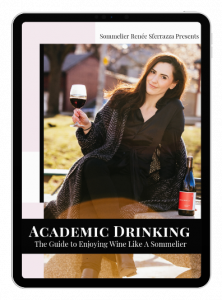
Interview with John Szabo, Master Sommelier
Taking a full look at Spanish wines was a treat! John Szabo has an affinity for Spain. Spending a lot of time in the country during his early years studying wine, Spain is a place of great importance to the first Canadian Master Sommelier. Culture, history and geography make Spanish wines so enigmatic.
The best part of Szabo’s class was that he shed some light on all the regions of Spain. He avoided Tempranillo and the two most well-known wine regions in the country, Rioja and Ribera del Douro.
Spain is covered from coast to coast in indigenous varietals that often get overlooked. Located in the Iberian Peninsula, Spain has always been a nursery for a myriad of indigenous grapes. The country was a haven for Vitis Vinifera during the last ice age, causing so many varietals to be native to the country. Grapes like Diego, Mencia, Bobal, Palomino, and Garnacha all find their native home in Spain.
Spain’s wine production has had its ups and downs, heavily influence by great winemakers coming from France that introduced barrel ageing and the endless wars that plagued the country till the 1970s. Despite its history, Spain has proven it is a big player in the wine world. Both large scale and Co-op producers have pushed to create great wine that reflects the true essence of Spain in the glass.
John Szabo’s IWEG Canada Master Class on The Wines of Spain, in partnership with Food and Wines from Spain, poured wines from all over the country. From the sparkling wine region of Penedès to the Canary Islands, to Monstant and the mountainous region of Extremadura. Featuring wines from Bodegas Los Bermejos. Benito Santos, Bodgas Vegalfaro, Bodega Palacio Quemado, Celler de Capçanes, Celler Unio Convey, and Gonzalez Byass & Co.’s Vilarnau and Tio Pepe
Eight glasses of Spain wine later, we sat down with John Szabo to find out a bit more.
What are two recent developments in Spanish wines that wine lovers must know?
“Just two?” asked Szabo.
“The birth of top-quality sparkling wine in Penedès. Which may seem a bit counterintuitive with climate change, but there are associations like Corpinnat that are really pushing the envelope of quality as is the group of producers under the appellation Classic Penedès. For traditional Cava producers, there is a realization that it is no longer just good enough to make traditional method sparkling wine; it also has to be exceptionally good traditional method sparkling wine.” “The rediscovery of many other indigenous varieties, for example, what Miguel Torres is doing, he is a leader in this moment and has a whole winery set up to micro vinify indigenous varieties. This will, at some point, become critical to the development of vineyards in Spain and probably elsewhere. The goal is to identify the most promising varieties, those best suited to a hot, dry Mediterranean climate and able to produce naturally balanced wines that won’t need much intervention, if any in the winery. I think there are a host of new varieties, well new old varieties that we will see revived that will make some interesting, compelling and important contributions to the wine world.”
How would you describe the revival of Garnacha in Spain?
“It is a glorious thing! I am a massive Garnacha fan. Spain has so many great old Garnacha vineyards, and a bunch of different places where it grows, with different conversions. There is not just one type of Garnacha, so the Spanish revival is multiple. From Aragon to Cariñena, to the Gredos Mountains, to Priorat, these are all radically different expressions of a beautiful grape variety. Garnacha is one of the great grapes of the world when it is done well, it is just glorious.”
What projects are you most excited about right now?
“This might not sound exciting, but it is really exciting to me, I am working on a book on wine chemistry. It is a project that I am personally very interested in and invested in, and I am hoping to learn a lot along the way. Shedding a little light on some of the mysteries that I have encountered in my wine journey and make it a bit more accessible and make readers better tasters with a better understanding of chemistry. It is a little bit more niche, but for me, pretty exciting.”
“It is a great project, and I think there is a demand for this book because there is a lot on wine chemistry, but it is almost impenetrable because it is written by scientists for scientists. I’ll be co-writing the book with a professor of chemistry, Dr. Benoît Marsan, actually translating his chemistry into the everyday language of the sommelier. That will be the difference. I want to look at amino acids, for example, and other umami eliciting substances in the wine, and implications for food and wine pairing too could be fun.”
Tell us about our favourite wine of the night, Celler de Capçanes, La nit de les Garnatxes’ Limestone’ from Montsant, Penedès.
“This is the one wine from this evening that I tasted for the first time tonight. It left me wanting to taste the other wines in the series.”
“This wine is one of four wines that they make in this terroir series; this is the limestone version, the Calissa. They also make versions on terroirs of slate, sand, and clay. For me, that kind of terroir experiment is really what makes the world of wine exciting. To take the same variety, made by the same producer and the same method with the only difference being the soil type.”
“And isn’t that what we live for here? To slice out those little nuances and celebrate the amazing diversity that wine can give!”

